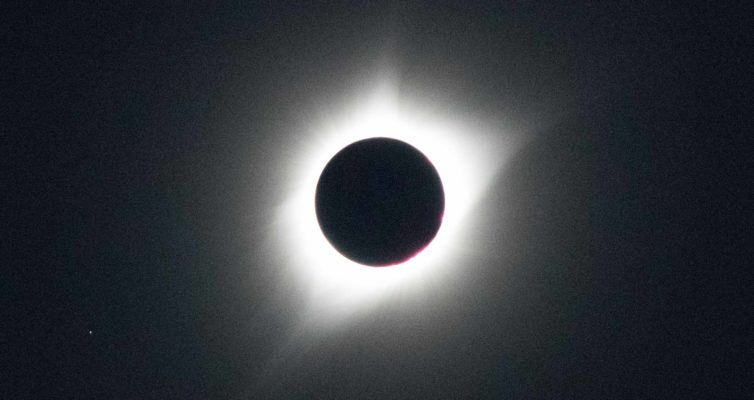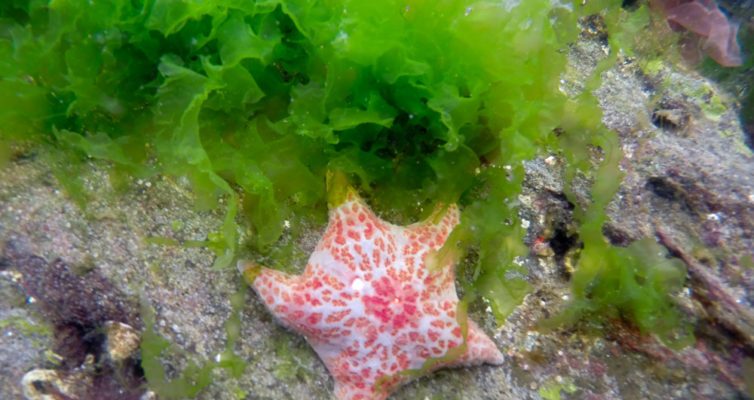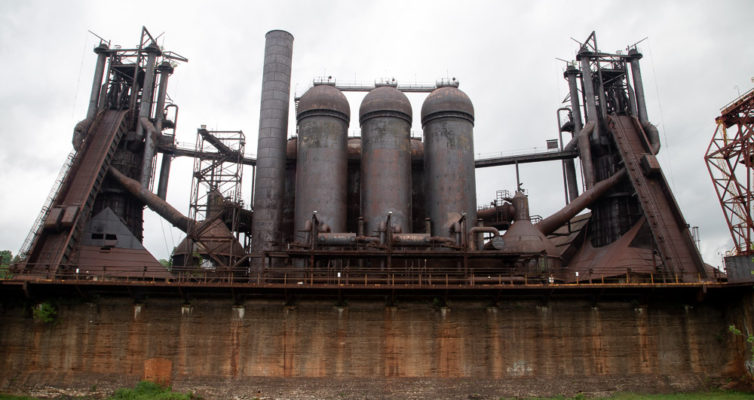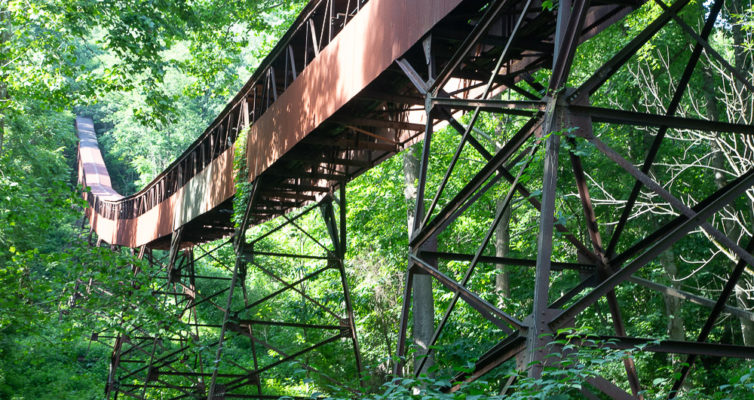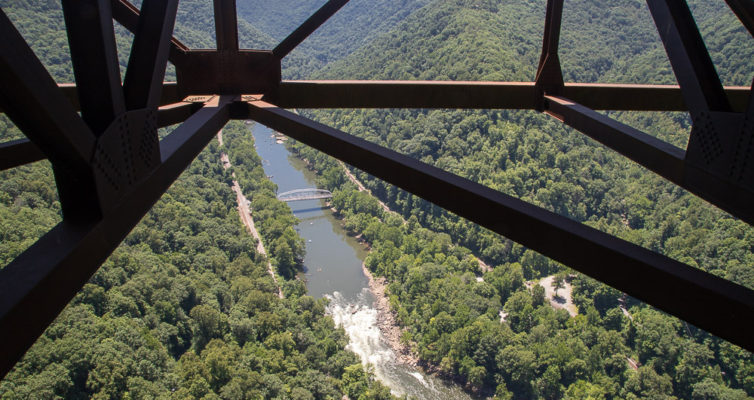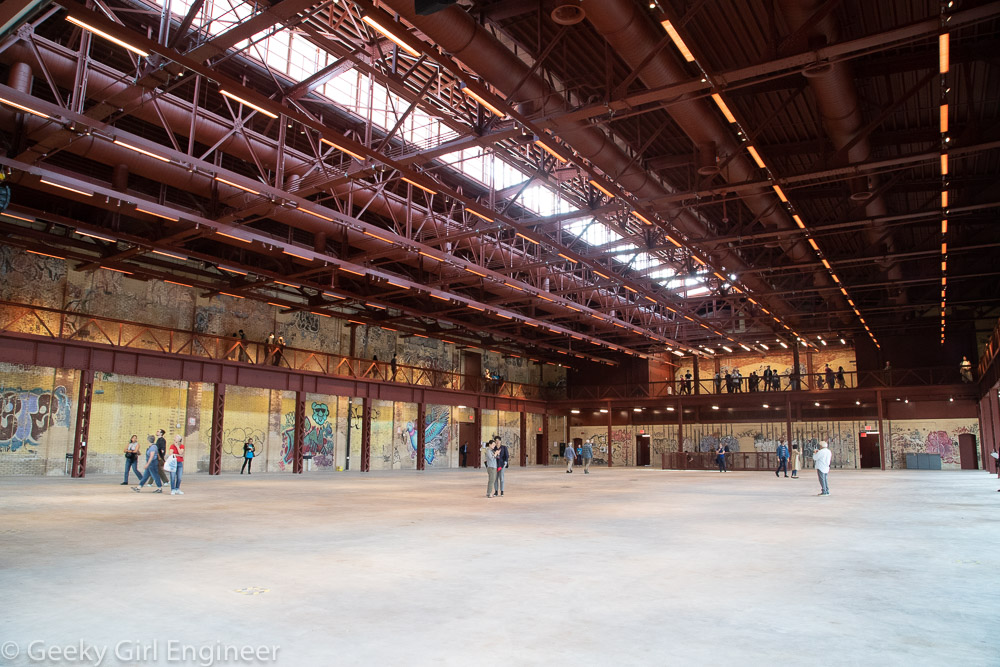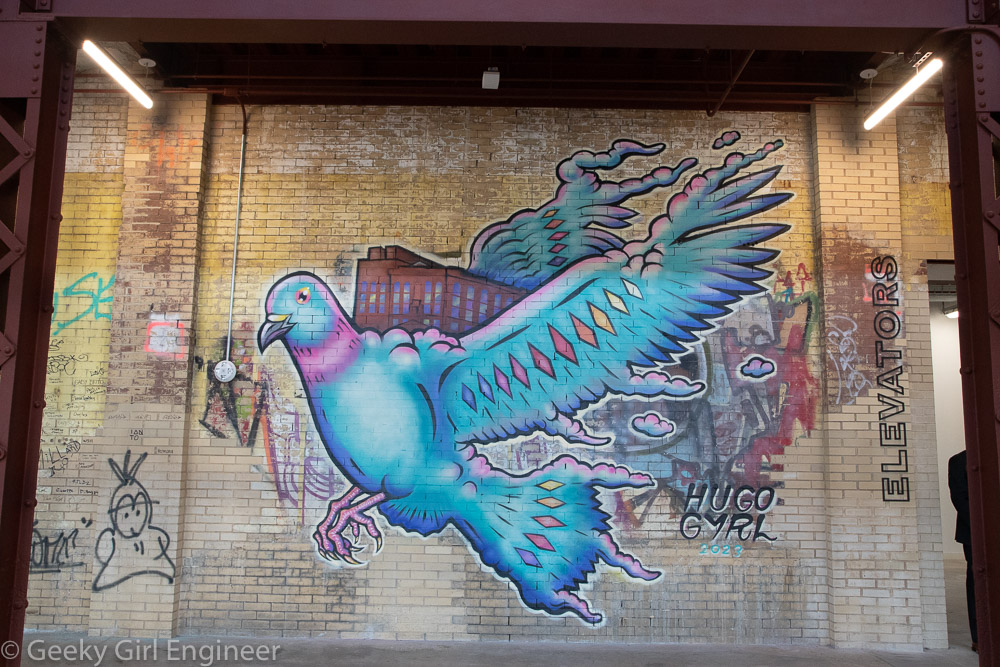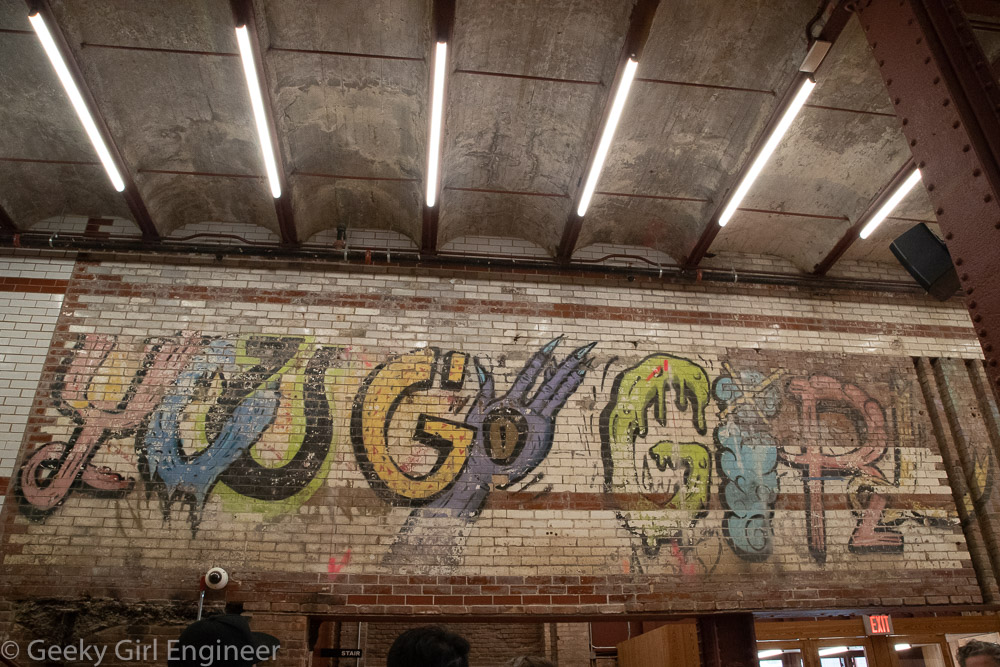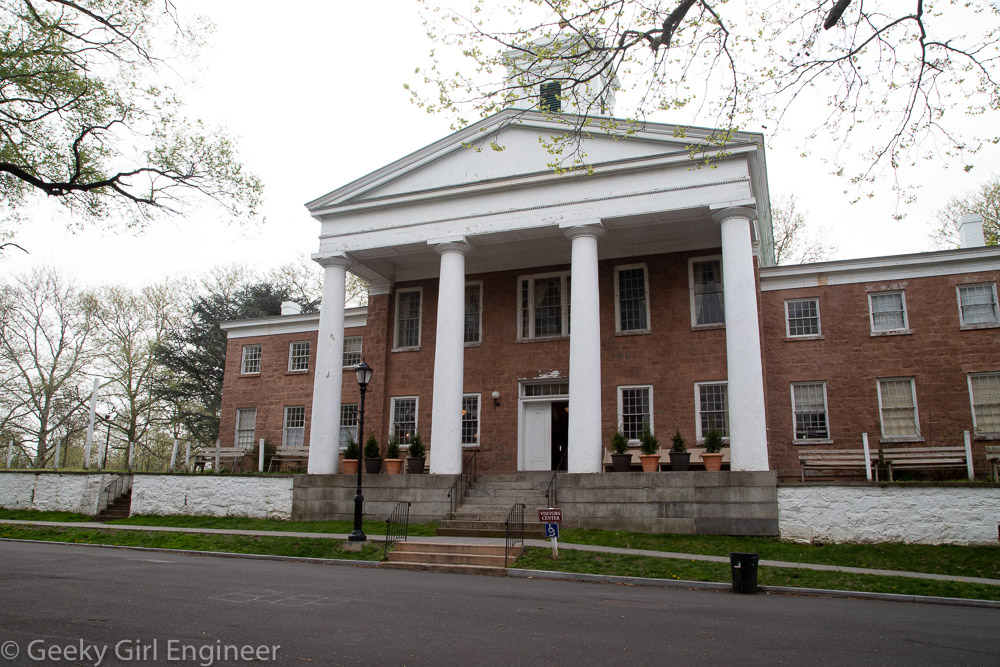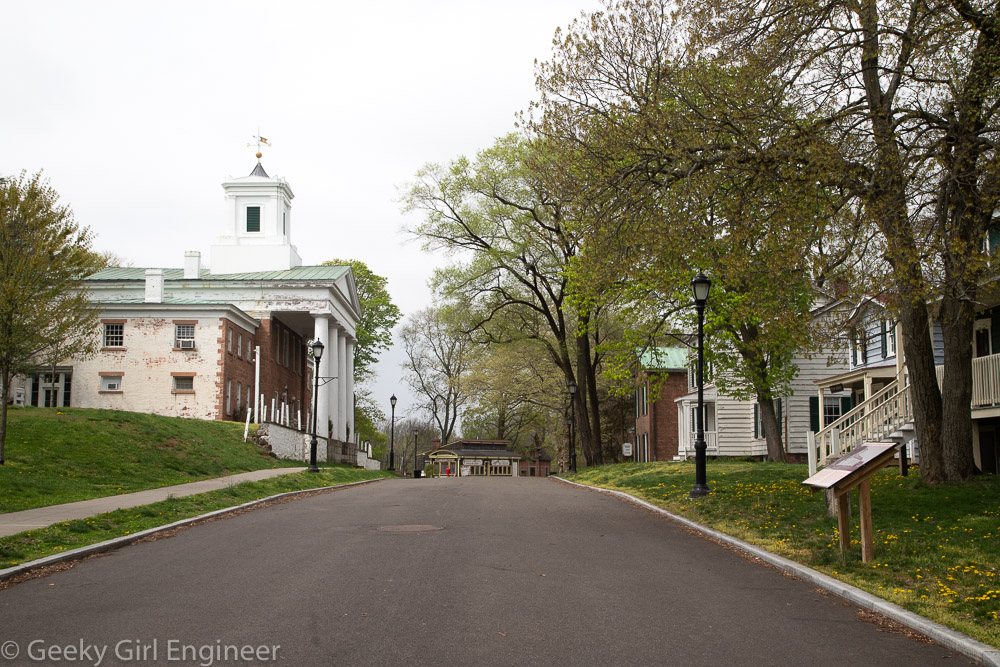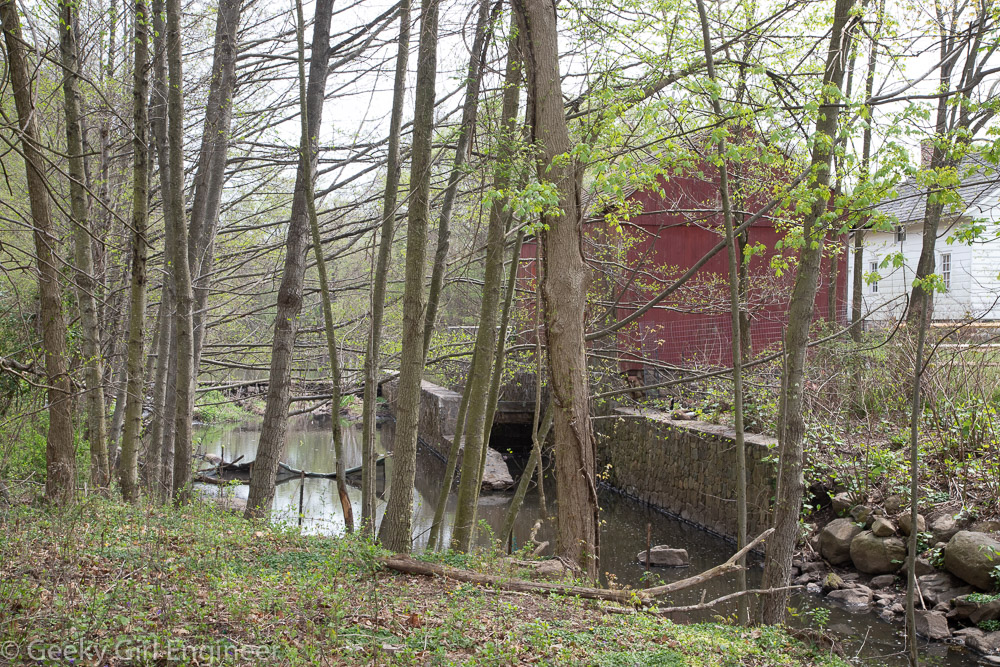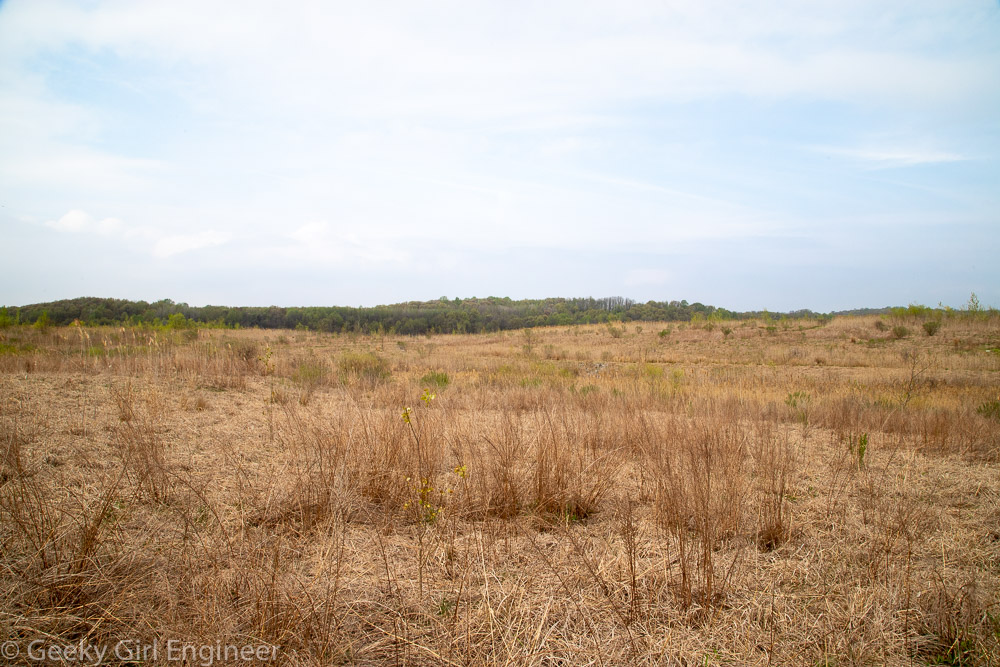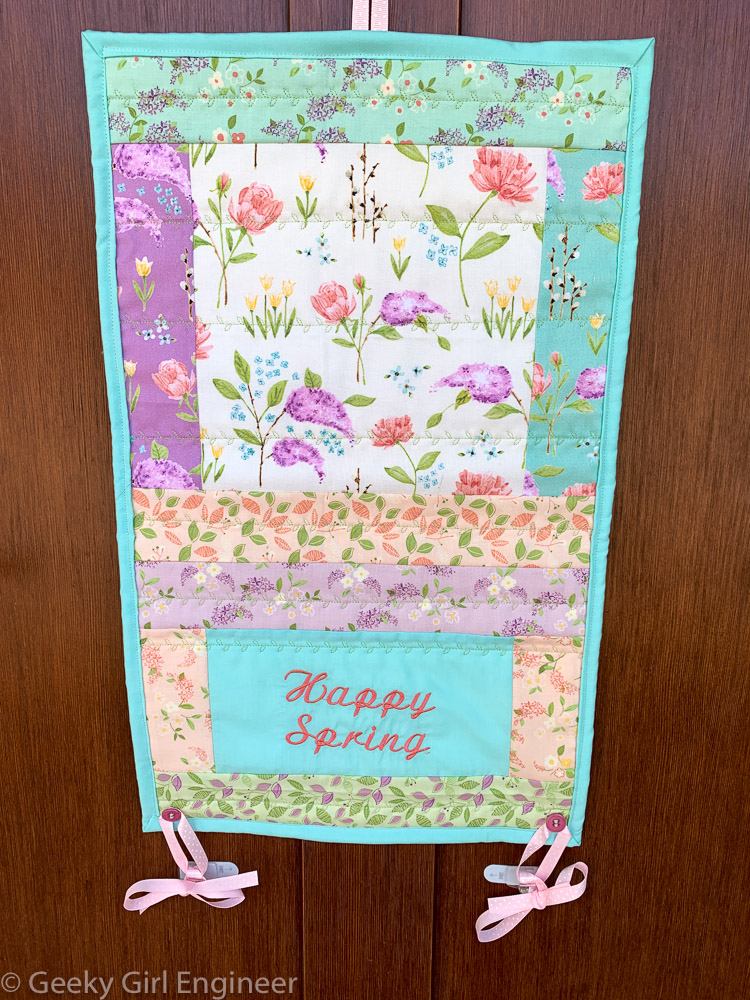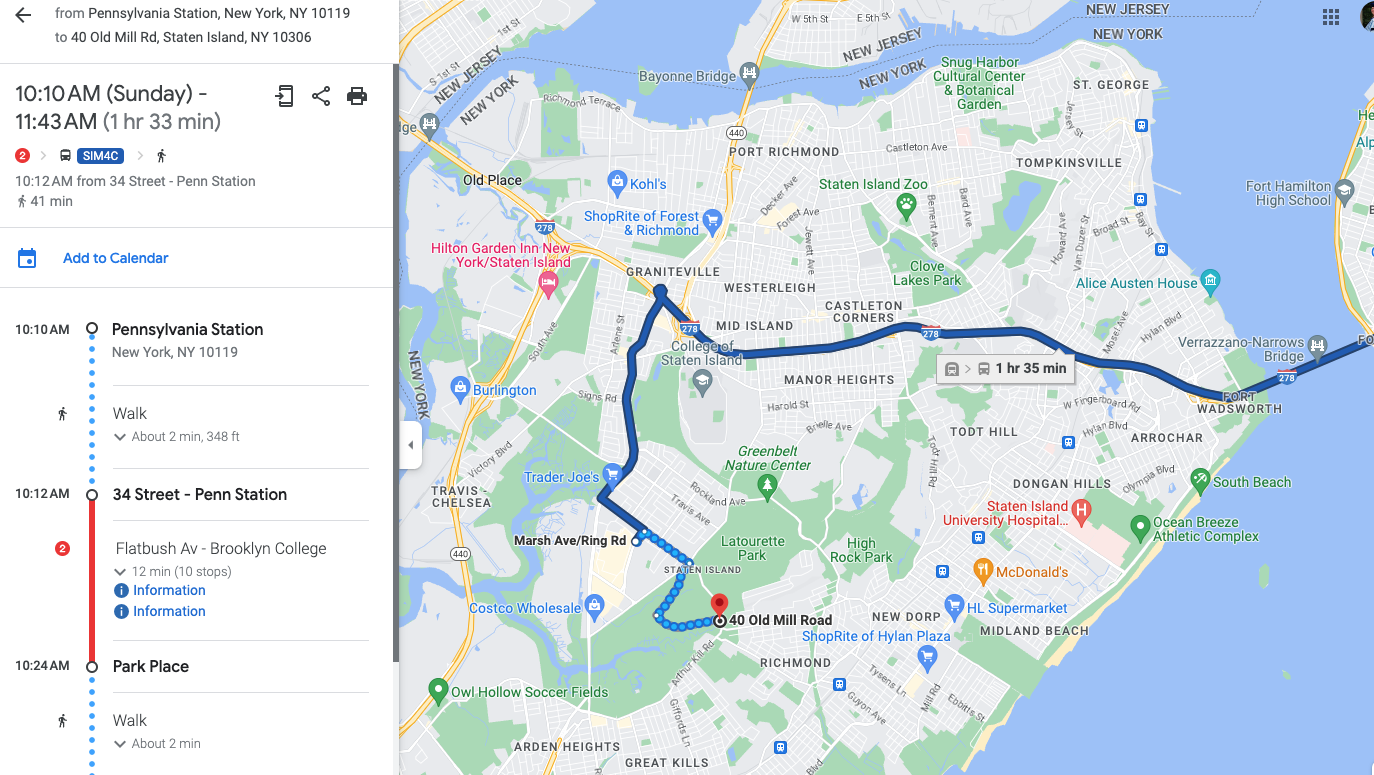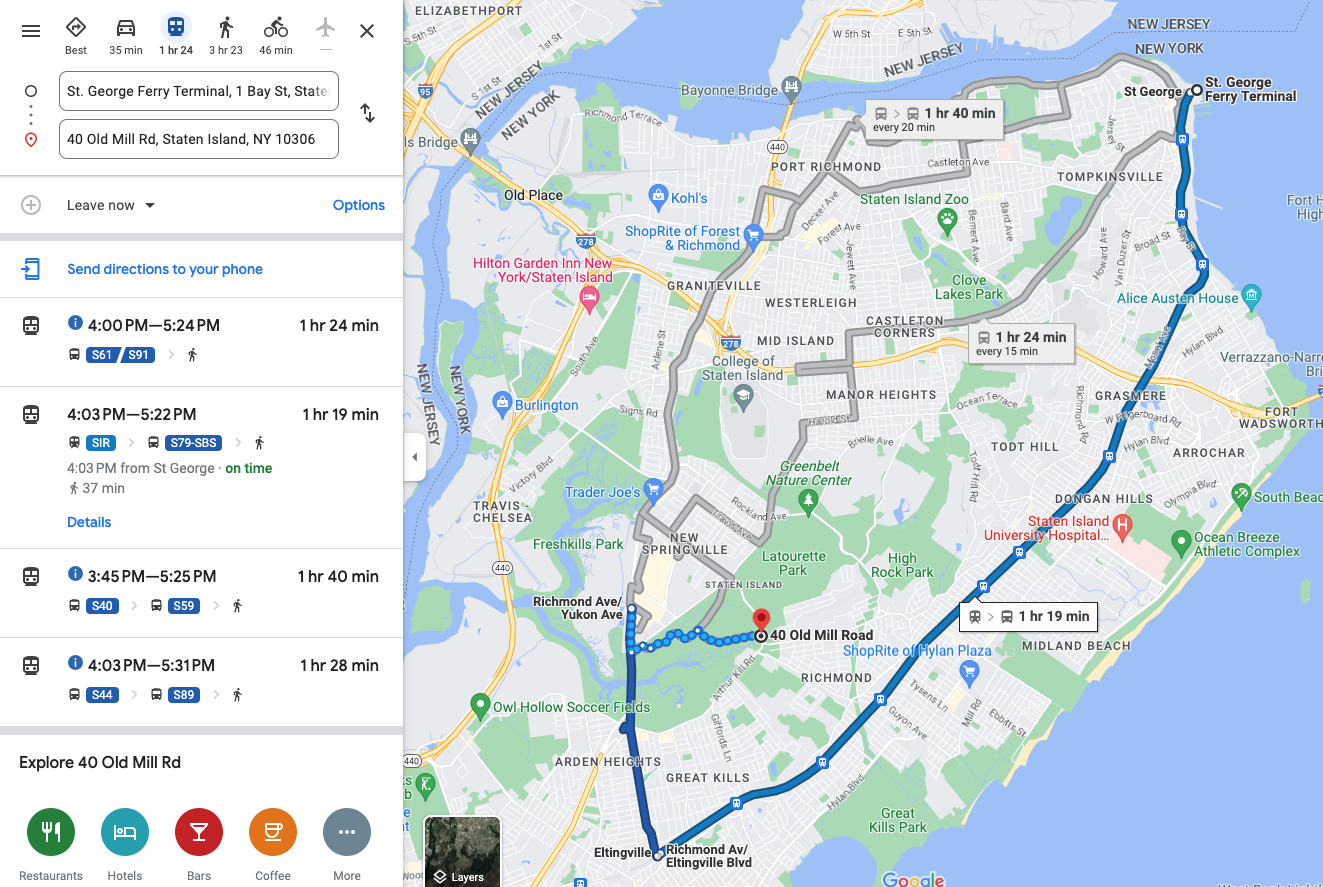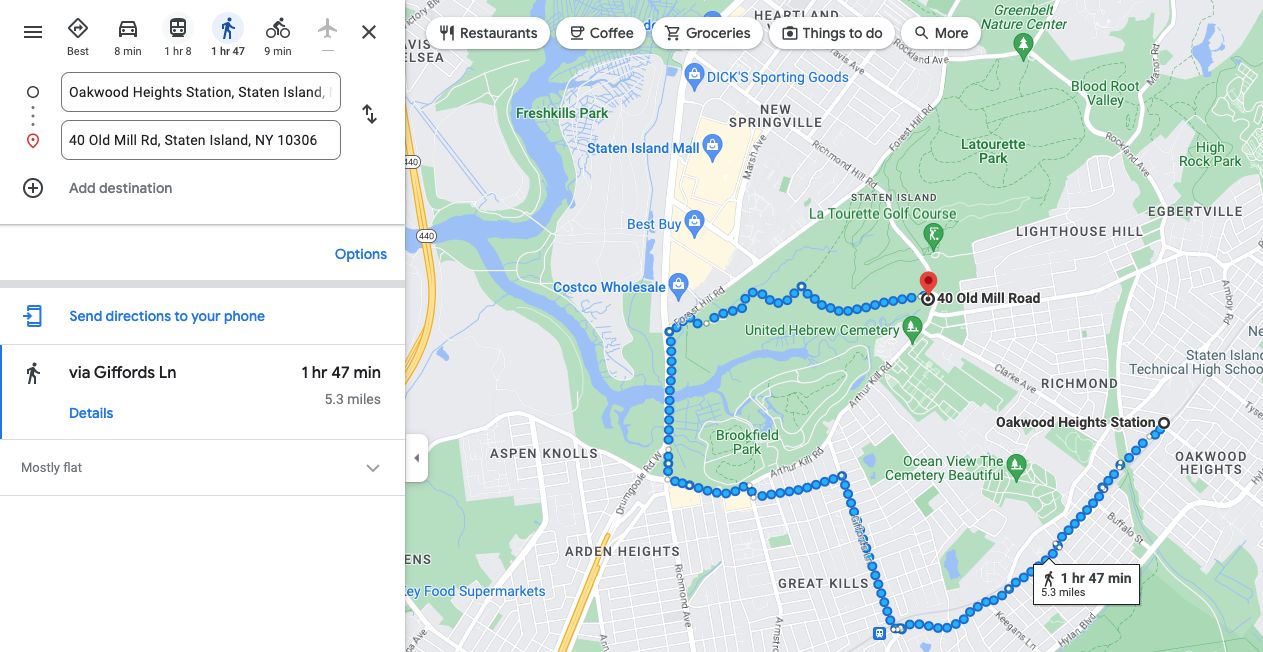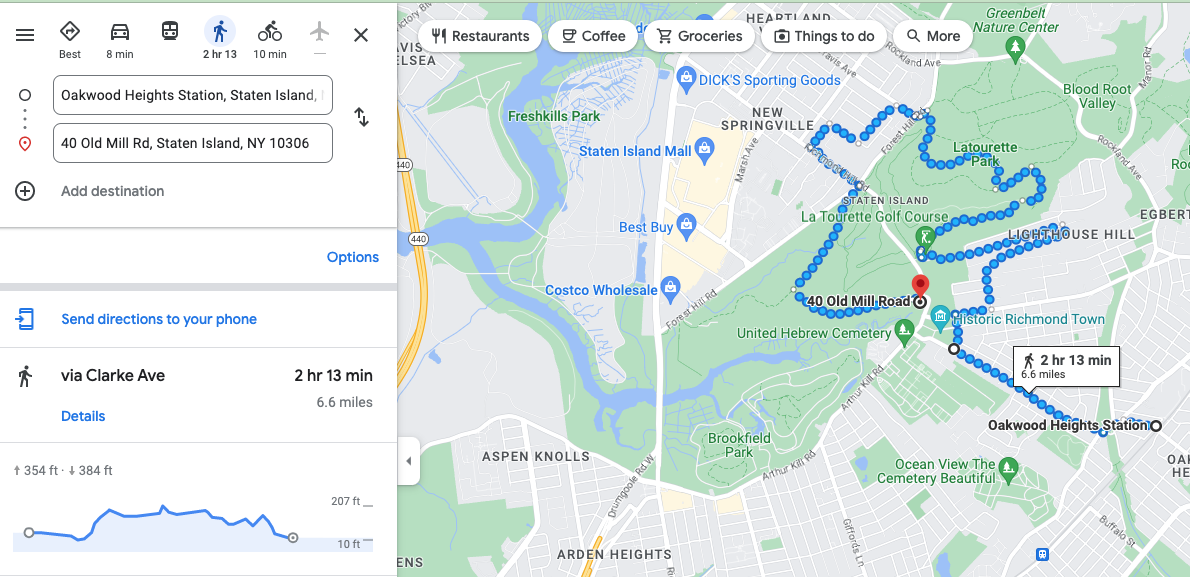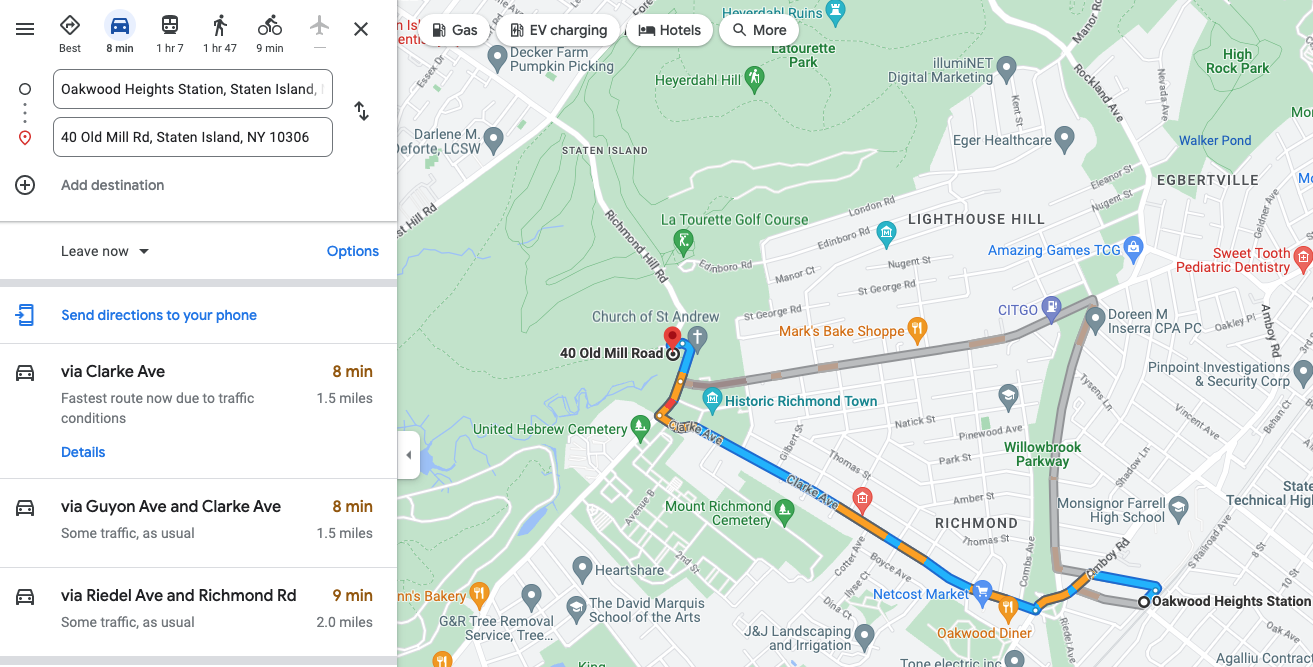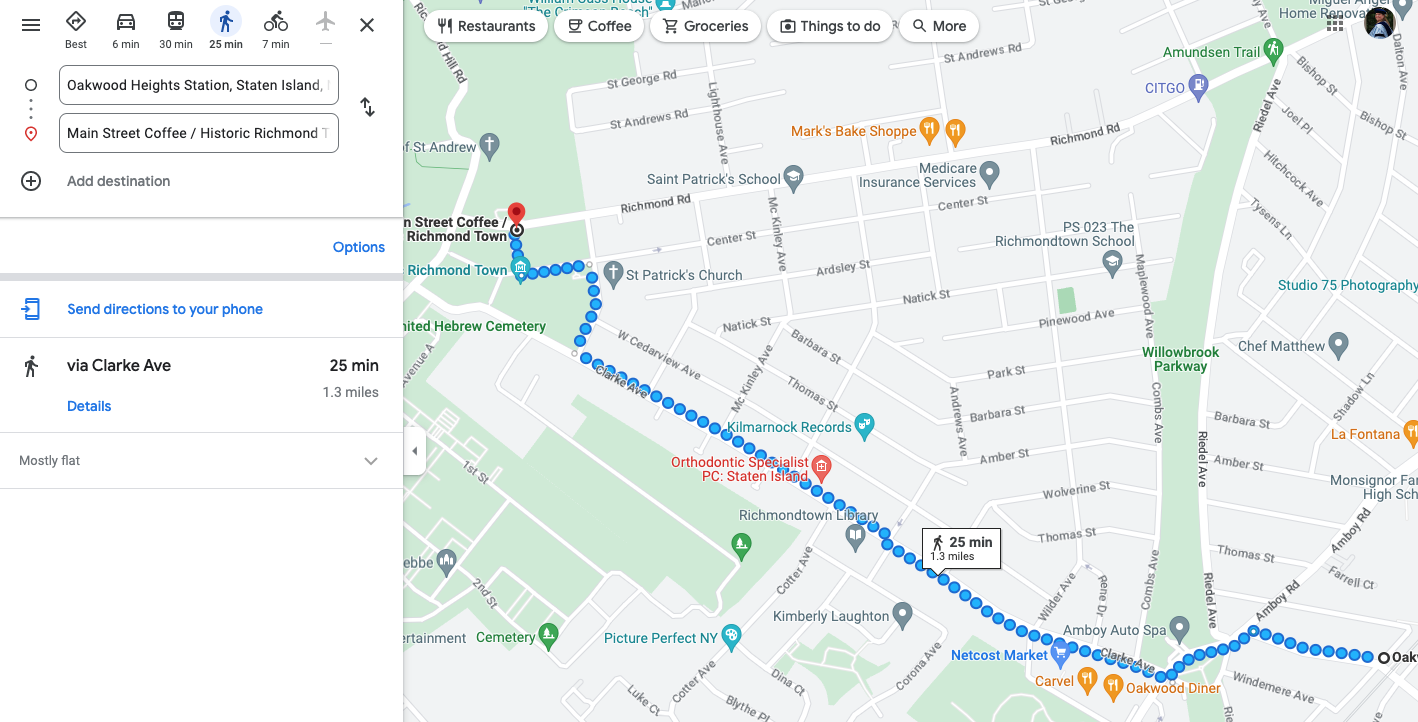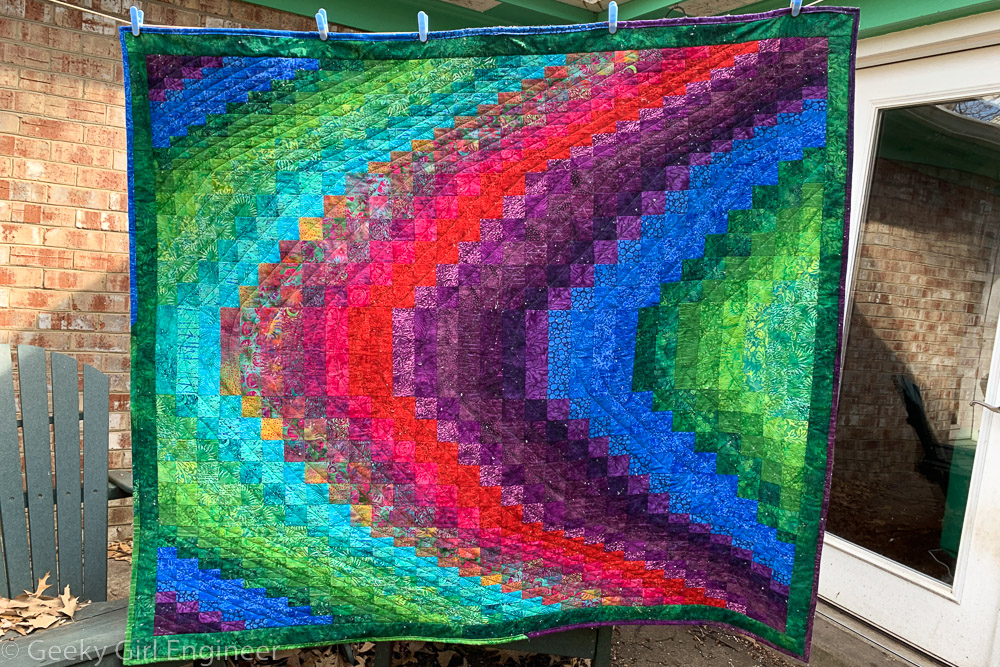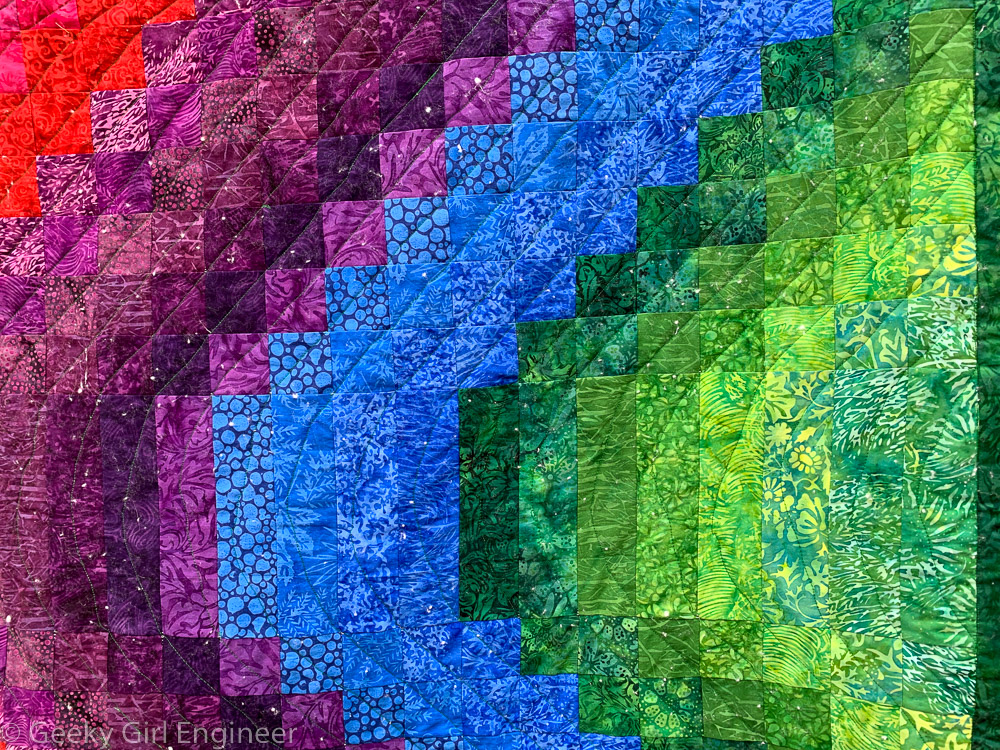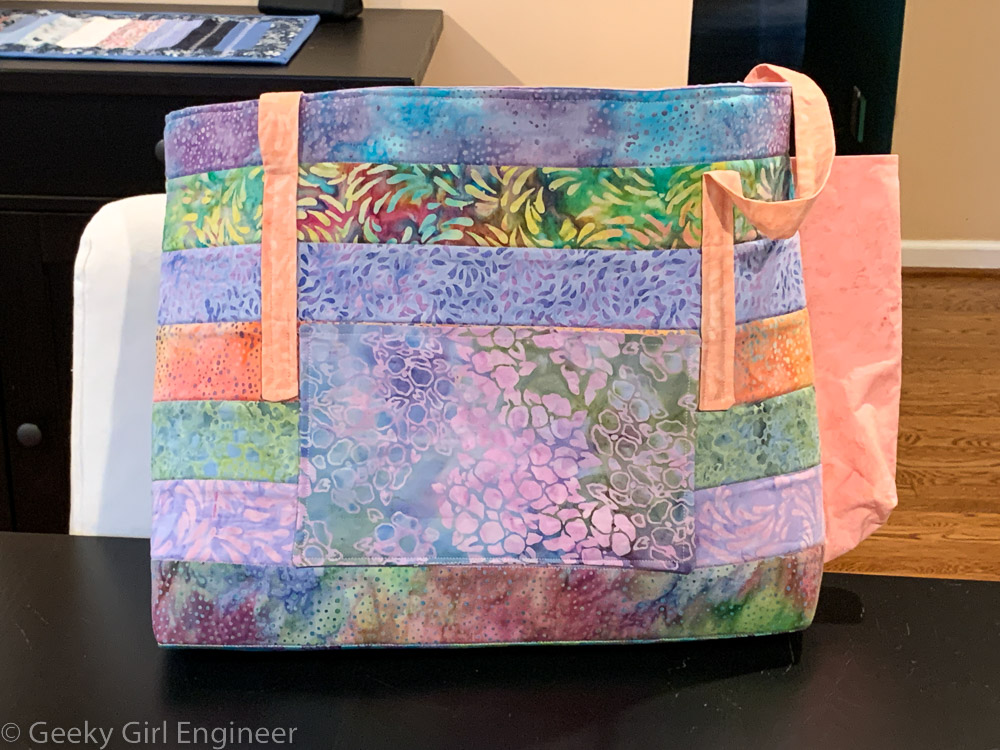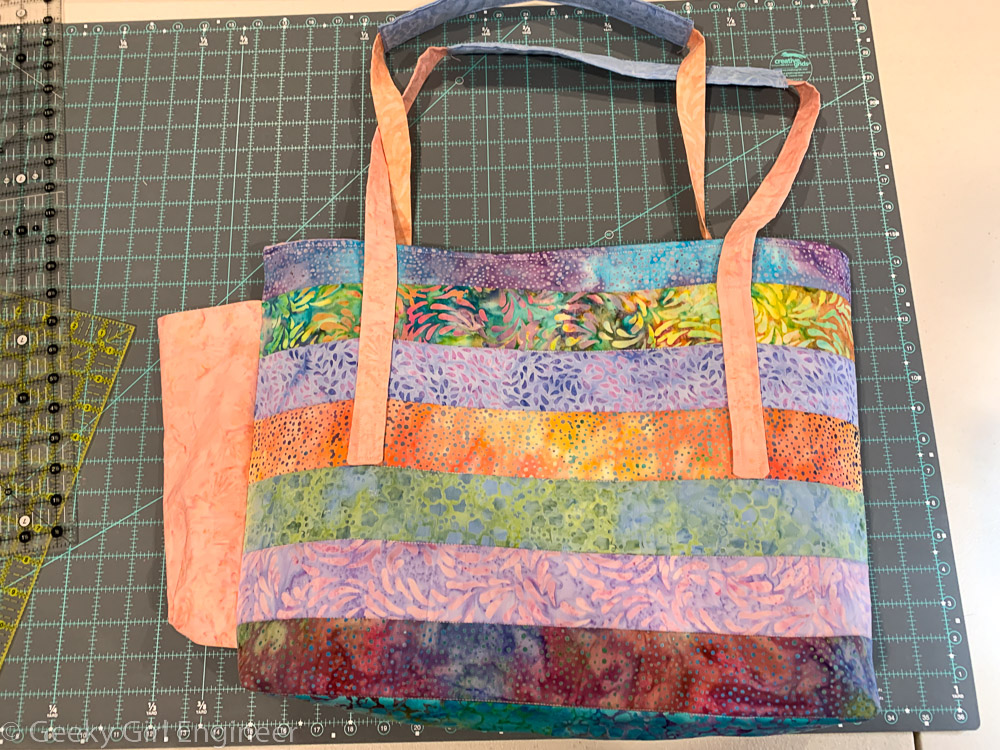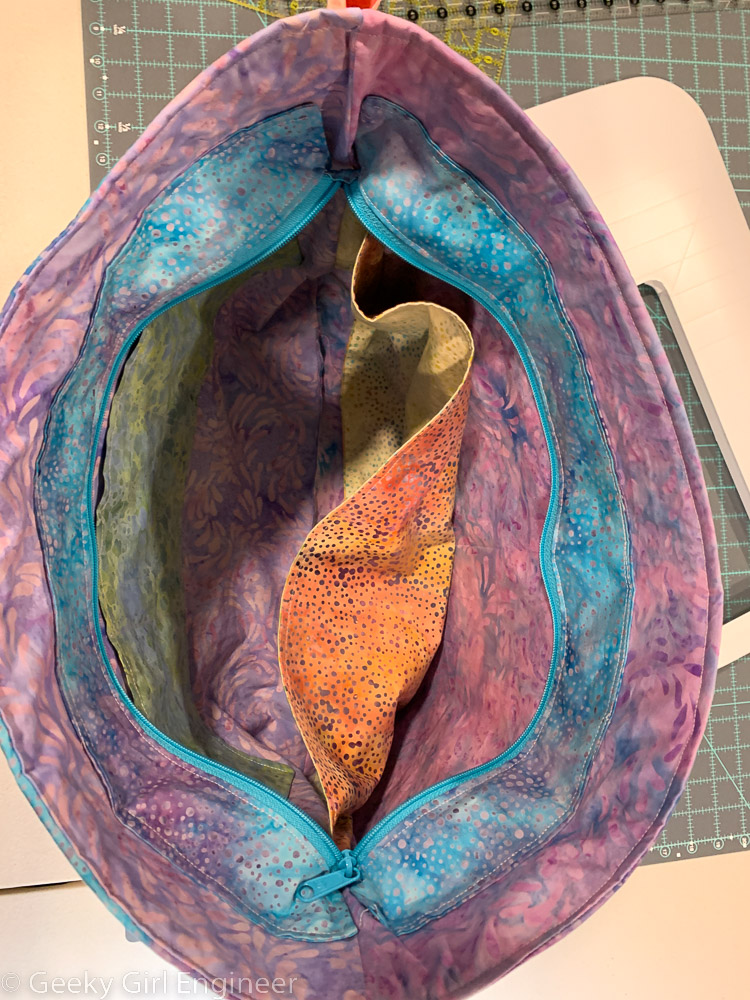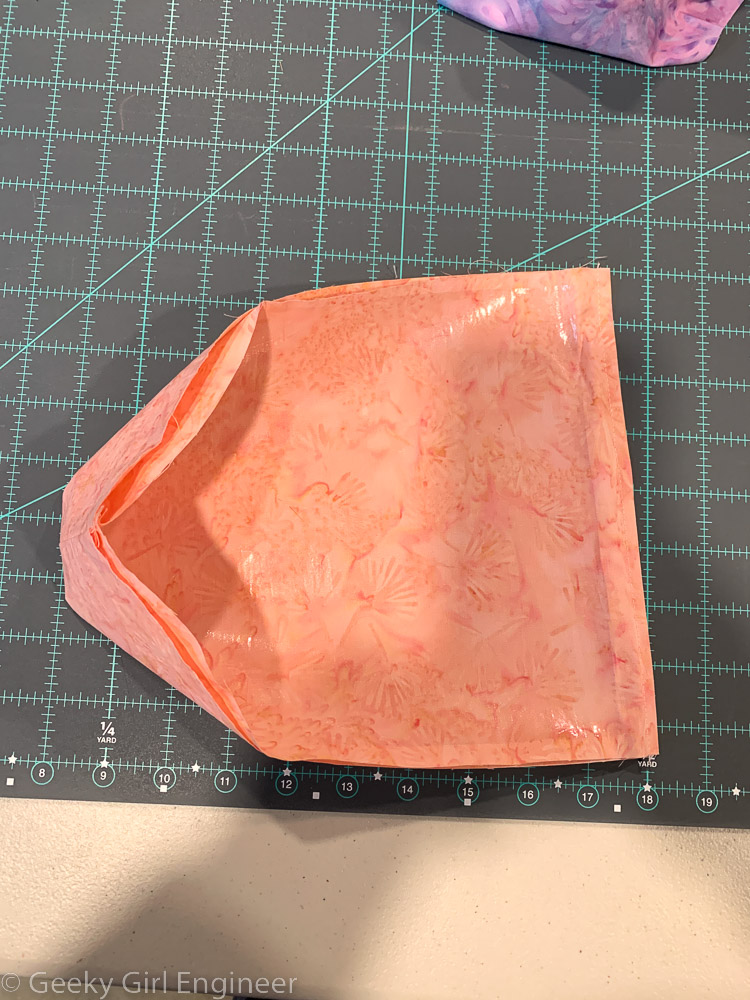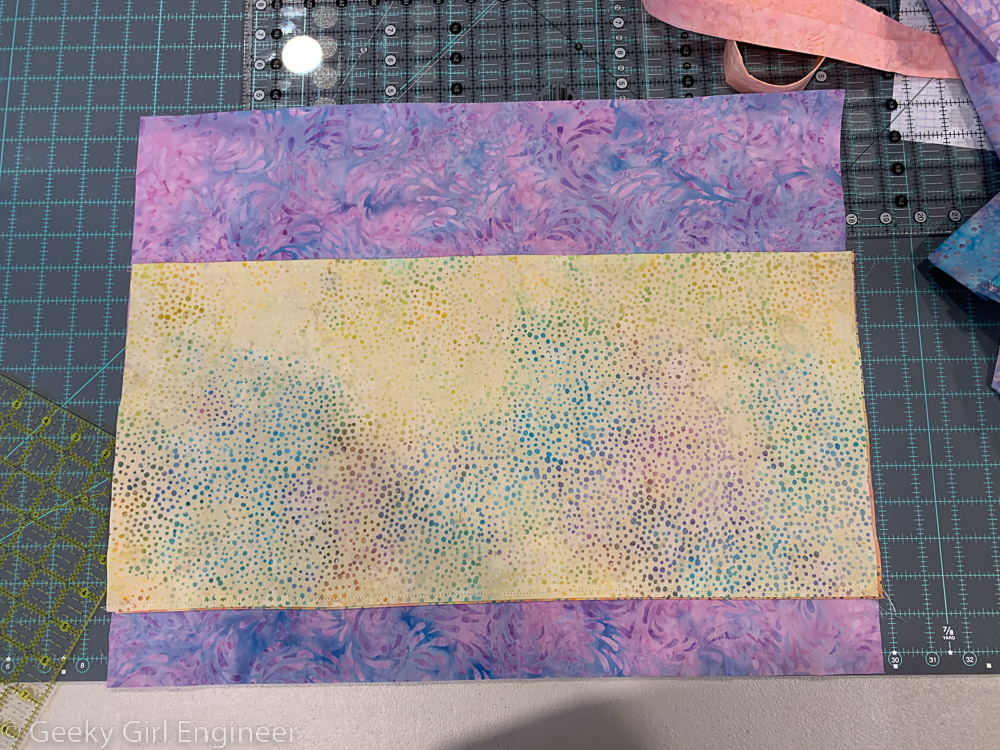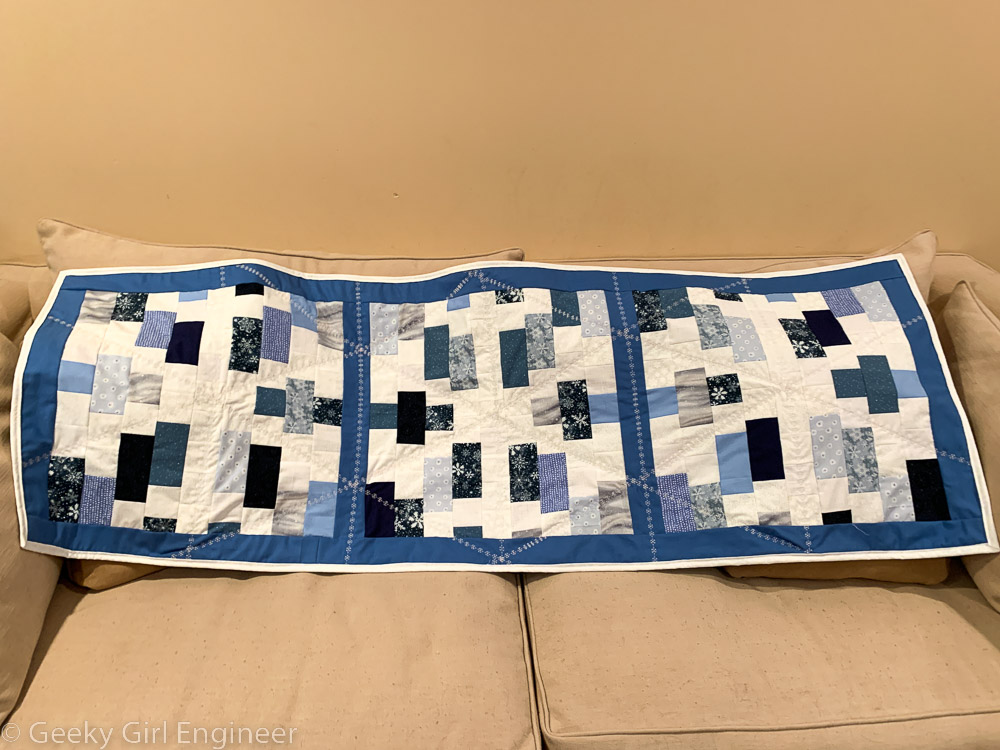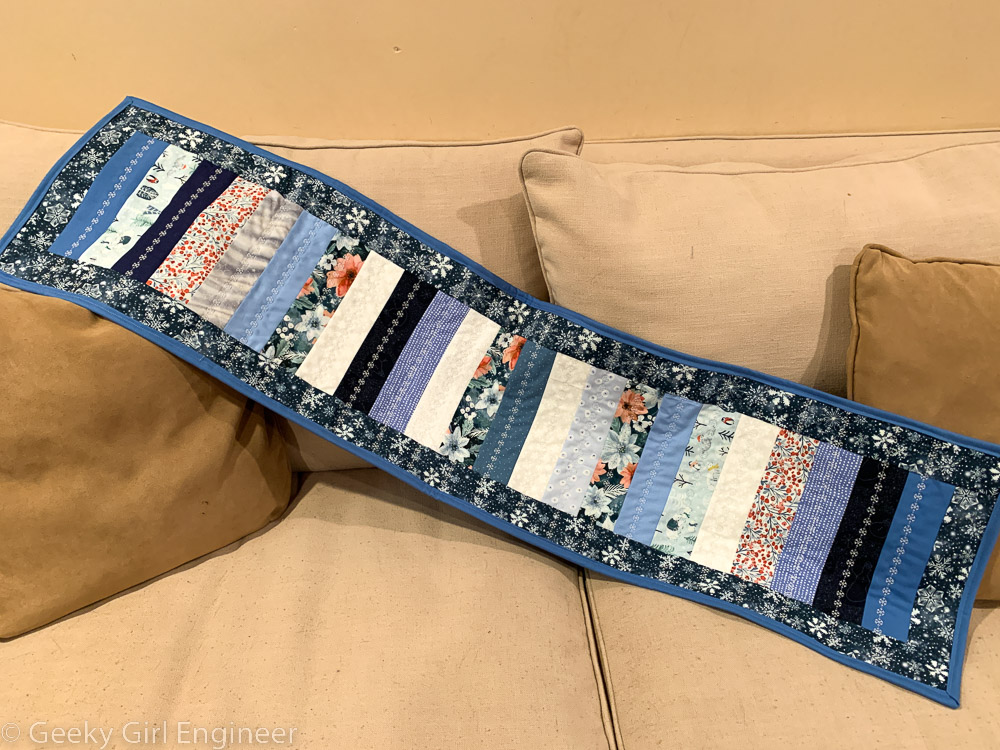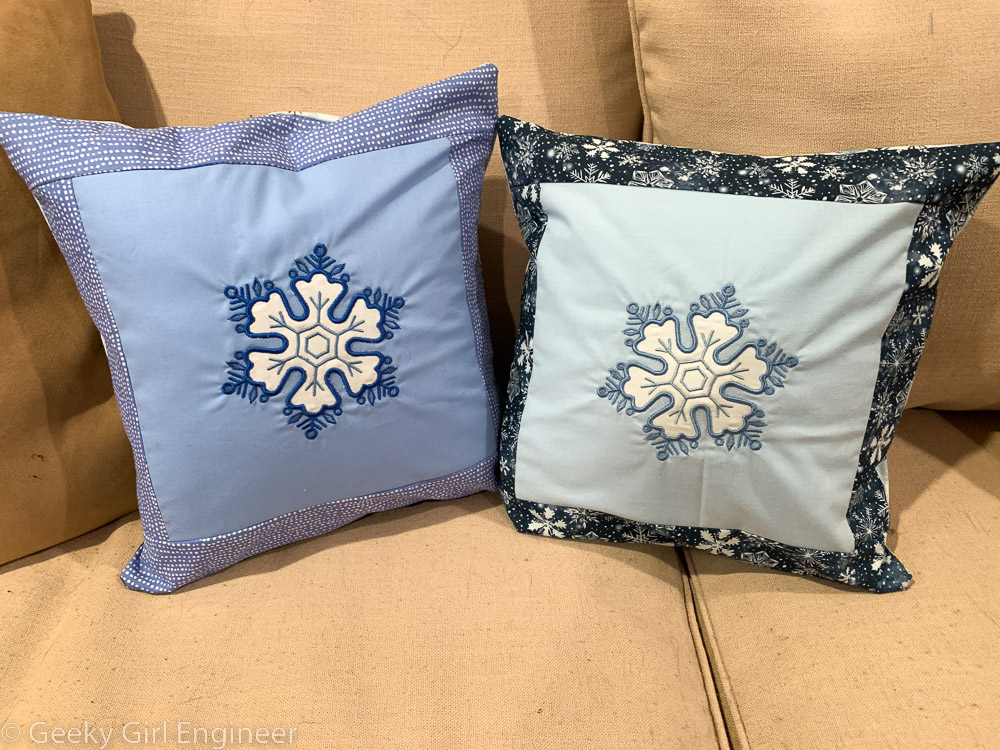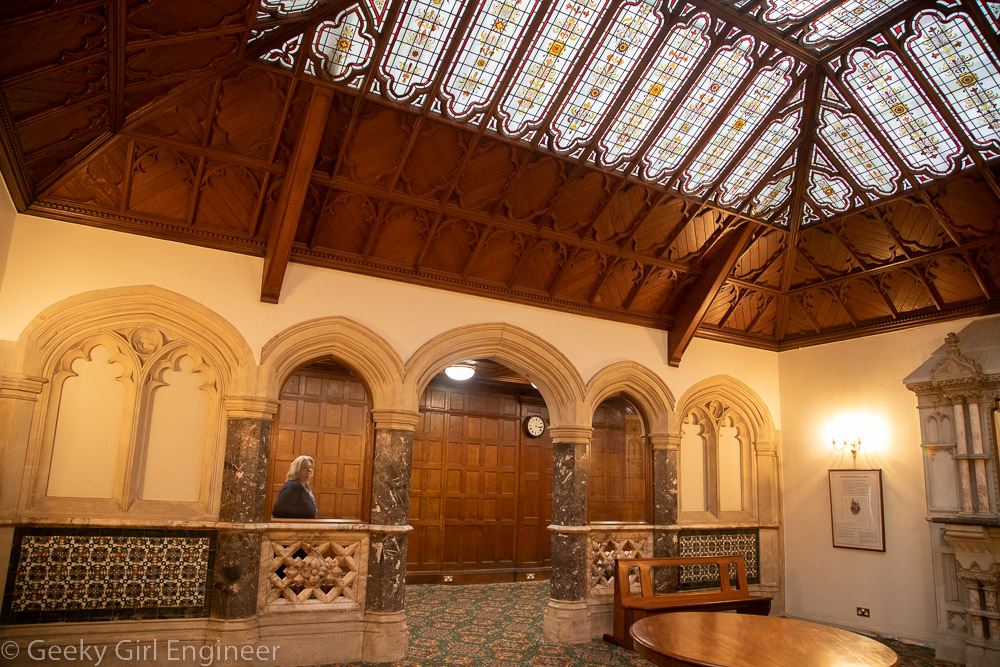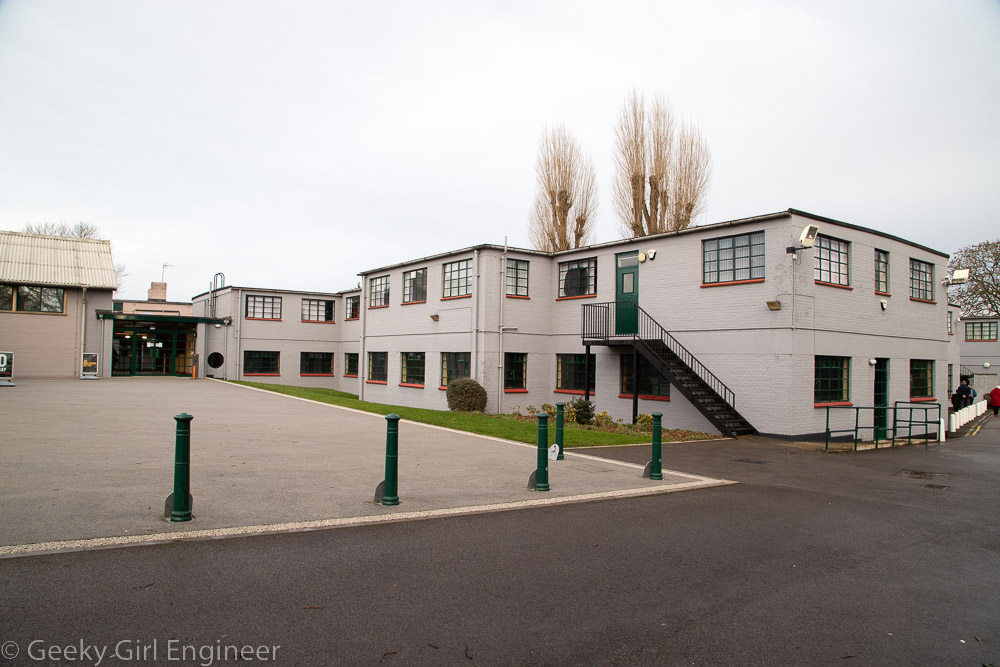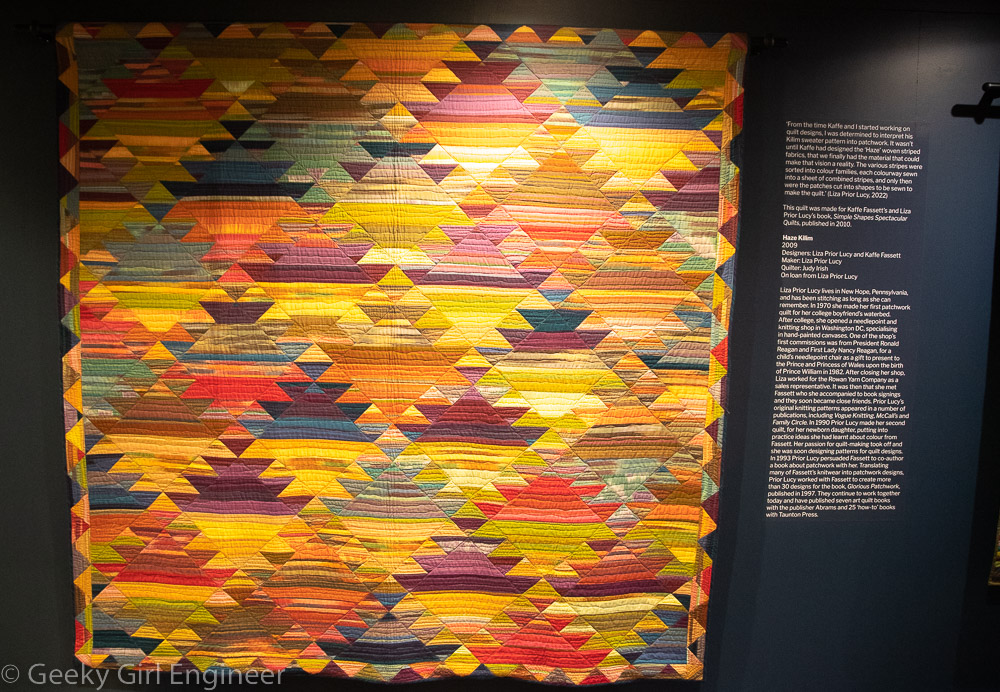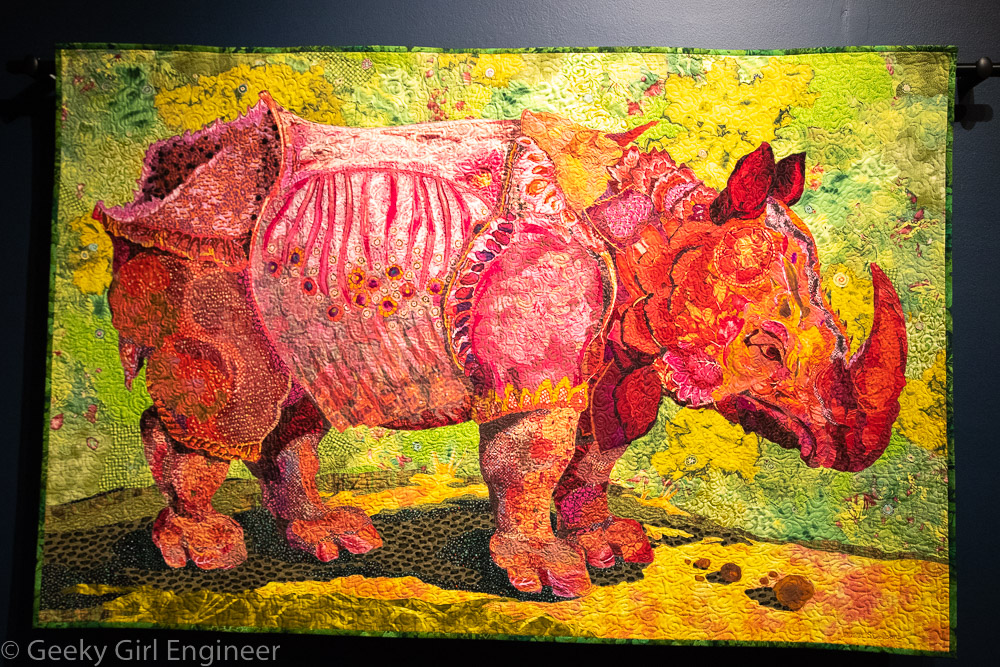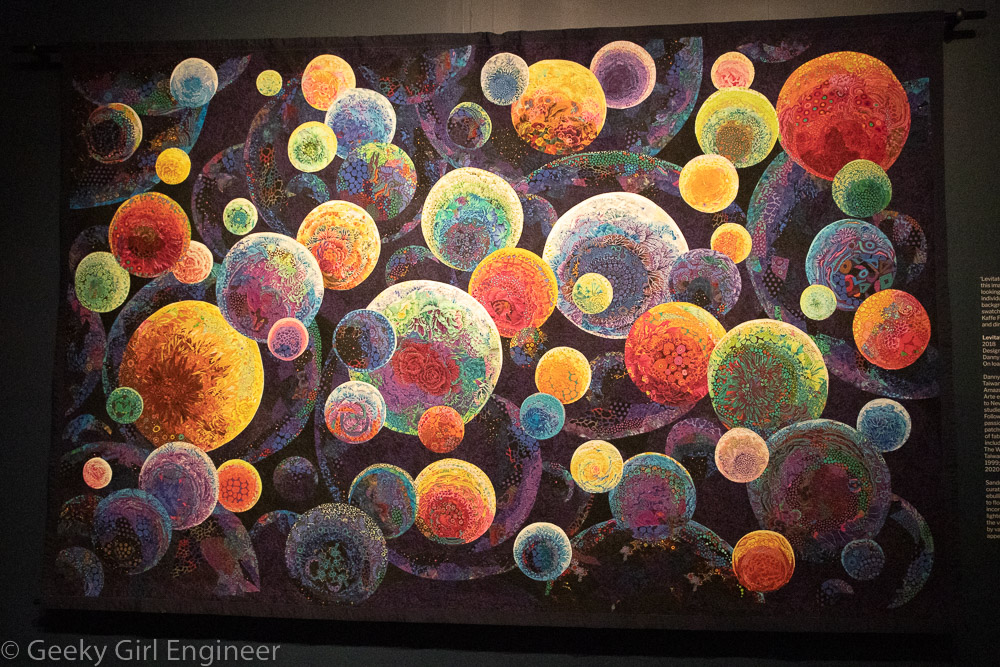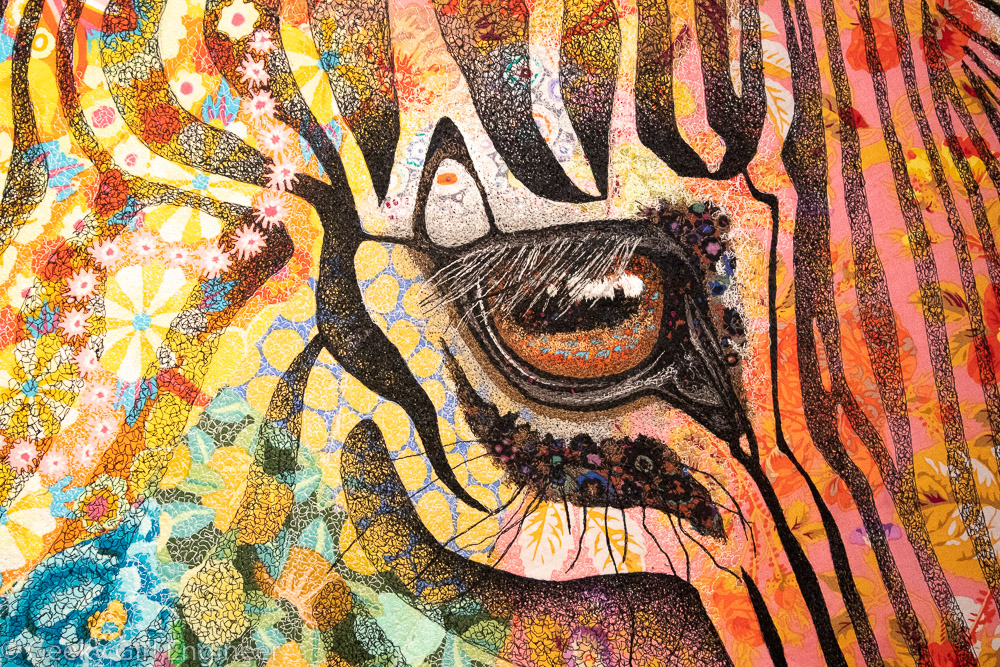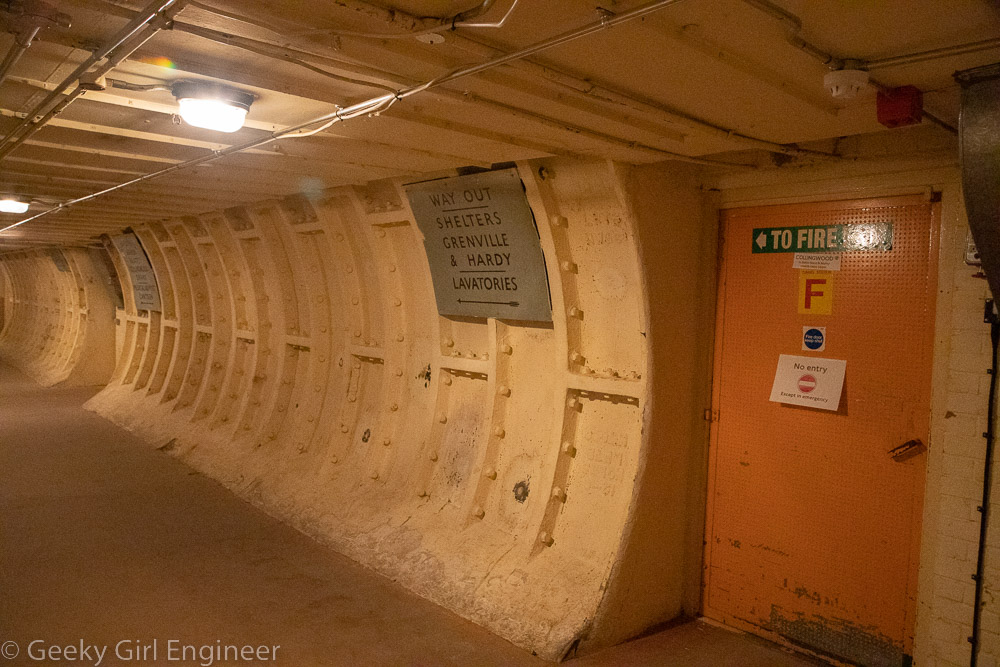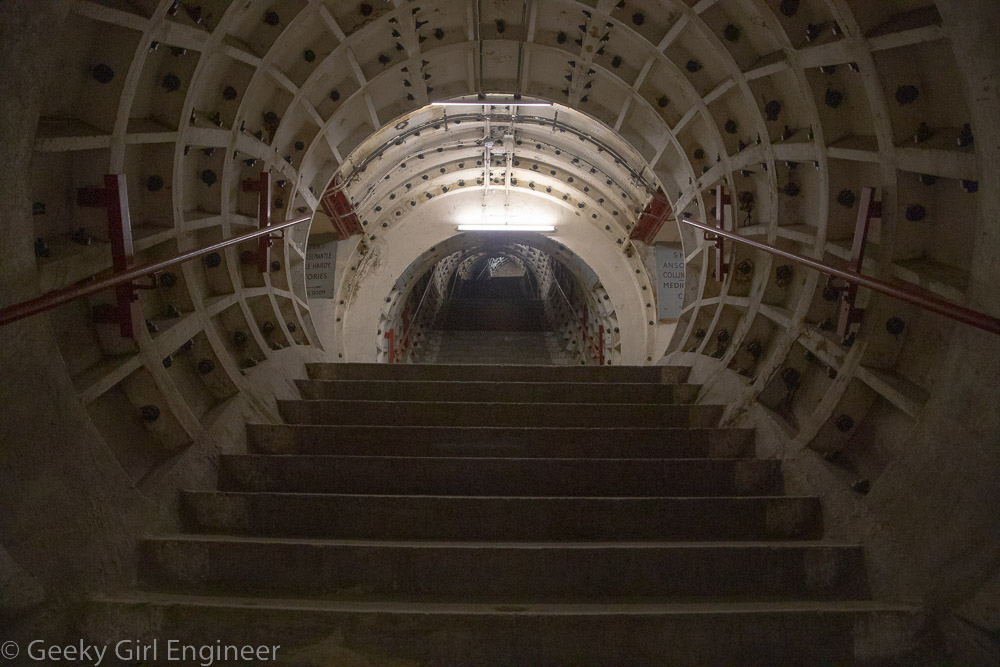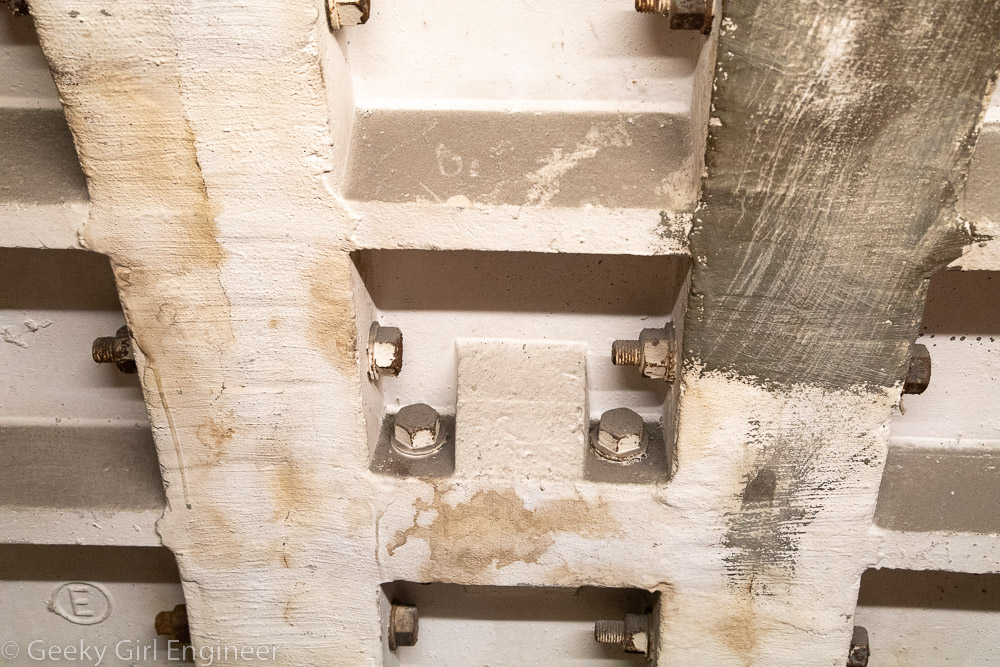Powerhouse Arts is a new arts and fabrication studio and rental venue housed in a renovated power station in Brooklyn, New York, and they hosted an open house today through Open House New York.The building has been completed renovated, but they have left some of the graffiti on the walls from when the place was essentially abandoned, and squatters lived there. The facility now houses several different art studio areas like a ceramics area and print shop. It also has huge spaces that can be rented. The facility is right on the Gowanus Canal, and it has wonderful views of Brooklyn and Manhattan.
Historic Richmond Town, Staten Island
Last week, I went for a guided walk with NYC H2O of historic Richmond Town, Staten Island to hear about the history there, in particular how the water affected the history. Historic Richmond Town is a neat little area as it is a park of historic buildings. If I read the information correctly, some of them were moved there to be part of the preservation area. There is a mill there that operated off the creek that runs by the area. Nearby and also part of our walk is Brookfield Park, which is a former landfill. From an environmental engineering perspective, it is nice to see what the landfill has become. Although it is not clear if remediation is ongoing, as the landfill was rather old, so it is not clear what engineering, if any, went into it.
More Spring Decorations
I have been enjoying making little quilted, front door hangers for holidays and season as well as pillow covers that I change out. Last year I made a pair of table runners for spring. I had fabric left over, so I decided to make a door hanger and pair of pillow covers to match. I like the way they came out.
Google Maps Walking Adventure
I use Google Maps all the time. It is really convenient, and for the most part it works well with various types of travel modes. I probably use it more for walking routes and public transportation than I do for driving. It is far from perfect, and it has a truly annoying habit of refusing to show public transport routes only without cars. It has an annoying habit of telling me to take a car to a subway station, which is just plain silly. You can tell it to give you a no car option, but you have to select that option every single time you use it on the phone. Still, it is useful.
There is a guided walk on Staten Island that I am interested in joining, so I used Google Maps to determine how I could get there on public transportation. Whenever I am in New York City, I always stay in the Penn Station area, so I mapped how to get to the starting point from Penn Station. Below is the route focusing on the Staten Island portion.
The route involves quite a bit of walking from the final bus stop to the walking tour location, and it did not seem like the quickest route. I noticed that the Staten Island Railway (SIR) has a station not too far from the tour location, and it looks like one of the stations was a shorter route, so I had Google route me from the ferry terminal, which is the terminal for the SIR.
Google Maps obliged and routed me via SIR, but the route seemed even more circuitous. It routes me three stops past the closest one to a bus. It then takes me on the scenic route to the walking tour location. I tried then to get it to route me from the closest SIR station to tour location.
Google Maps really wants me to take a walking tour of Staten Island, I guess. This is clearly not the most direct route. I then tried to force it to take me on the more direct route by moving the route. Things just got silly at that point.
This clearly is an absurd route, and it also seems to be taking me on a tour of a golf course, which is probably not an actual walking route. I thought perhaps I was missing something, like a road that was not open or something, so I had it route me from the same starting to ending point but in a car.
What do you know, it knows there is a direct route, but it just refuses to believe you can walk it. I played with it for quite a bit. I also used street view to try to figure out why it would not let me walk on the same street it would let me drive.
After much experimenting, I finally found that it would give me a direct walking route to a nearby coffee shop. I still don’t know why Google Maps will not let me walk directly on to where I want to walk. My best guess is that part of the walk does not have sidewalks. The route definitely does not involve some sort of freeway or similar where it would be dangerous for a pedestrian. However, the answer can’t be lack of sidewalks because a part of the route above does not have sidewalks either based on Google street view. Thus, I don’t know.
TL/DR: AI is not taking over the world yet, at least for navigation.
Bargello Quilt
I made my first bargello quilt. I have been exploring the different patterns that can be formed using a bargello technique. For my first, I decided to so something simple, and I designed it to look like a parabola. I also quilted it by connecting the corners of the pieces to emphasize the parabolic shape. I like parabolic shapes. Also I love fluid dynamics, and the velocity profile of laminar flow forms a parabola. While I named this quilt Parabola. I could have named it laminar flow. Also, I am a nerd.
All the fabric is from Island Batik, Gemstones and Rainbow Days series.
Laptop Tote Bag
I made a couple of tote bags for relatives for Christmas, and now I wanted to make one for myself. I combined elements of a couple of different designs I have seen to make my own. I designed it to hold my laptop, notebooks, and a few other items. It has one outside pocket, and two interior pockets. One of the interior pockets has divisions sewed into it to make it useful for pens and such. I also attacked an umbrella pocket to the exterior. The interior of the umbrella has an iron on vinyl coating in case the umbrella is wet when I put it in. All the fabric is from the same batik collection.
Winter decorations
I’ve been enjoying making holiday decorations, mainly in the form of table runners, pillow covers, and a front door hanger. While it is currently carnival season, I was not quite ready to put up my Mardi Gras decorations, so I decided to make some season decorations for winter. Essentially the decorations are snow themed. For the dining room table runner, I designed a pattern that is supposed to look like three snowflakes. I am not sure if that is clear, but I like how it turned out.
Bletchley Park
As I am in London, I took a short train to Bletchley Park to see where the British codebreakers worked during World War II. I had read about this place before, so it was neat to see it in person. You can tour the mansion where they originally worker as well as most of the other buildings that were added on later. They also have exhibits explaining how they decrypted codes and machines that were built to aid in decryption. To be honest, even though I understand the basics of decryption, I still had trouble following much of what was explained. However, it was still interesting to see. Also the mansion is beautiful, and the newer buildings are pretty much what you would expect of a WWII government building.
While walking to the mansion, there was a fenced off area where there was a hole, so of course, I had to investigate. I’m walking around this historic site reading about cryptography, and I, being me, have to go investigate any hole in the ground, especially when pipes are involved.
Kaffe Fassett: The Power of Pattern
I’m in London, and before traveling here, I heard about a great exhibit that I put on the top of my to do list. London’s Fashion and Textile Museum has a temporary exhibit called Kaffe Fassett: The Power of Pattern. The exhibit explores Fassett’s world, with original artworks from invited makers as well as Kaffe Fassett and Brandon Mably and Philip Jacobs. It also has textiles works, photographs and archival material to further educate on his work. I love many of his fabrics, and the first quilt I created was with his fabric. Thus, I knew I would like this exhibit.
The exhibit is wonderful. I spent the most time studying the works of art by artists using Kaffe Fassett textiles. They are wonderful, and some of them are just breathtaking. I spent quite a bit of time studying them trying to understand how they were created. They inspired me to want to create my own art although I am not skilled enough yet to create works like the ones I saw. Below are some photos of some of the works that most captivated me.
Clapham South: Subterranean Shelter Tour
Last time I visited London, I found out that London Transport Museum offers Hidden London tours, so I signed up for one. It was fantastic, and luckily they were offering another tour while I was here again. This time, they offered a tour of Clapham South subterranean shelter that was built during World War II. When the Germans bombed London during 1940-1941, some people took shelter in London Underground stations, which the transport authorities didn’t really want them to do. The government then asked them to build proper shelters for people. The transport authorities had previously had plans for an express train to run underneath the Northern Underground line, so they used parts of those plans to plan ten shelters to each shelter 10,000 people underneath Northern line stations. Only eight stations were built though, and London Transport Museum now owns one of them, the one that that was built under Clapham South station.
The shelter is 11 stories underground and has over a mile of subterranean passageways. It is accessed via a spiral staircase with many, many steps. [We had to walk down them and then back up when the tour was over.] The shelters were built just like London Underground tunnels with the idea that after they were no longer needed as shelters, they could be used to start construction of the previously mentioned express lines. That never happened though. The tunnels were all divided in half horizontally, so that they formed double-decker shelters. Each level was then divided into eight sections all given names of historical people, with rows and rows of beds. People would be assigned a bed and told which section and which bed number was theirs. The shelter were not finished before the end of the Blitz, but they were used later when V-1 and V-2 bombs hit London. Government propaganda advertised them as “luxury tunnels” with “comfortable canteens.” Those terms are kind of relative. The beds were small and really close together. They did have lavatories, but the toilets consisted of buckets with a possible seat. The buckets were emptied into a tank. This is my favorite part (especially as an engineer), when the tank needed to be emptied, a valve was turned to add compressed air, and another valve was turned to allow the compressed air to (hopefully) shoot the waste up into the sewer tunnels above. However, the shelters certainly kept people safe from bombs. Some people who stayed there had no other place to go as their home was destroyed.
After World War II, they continued to be used at different times. In 1951, there was a huge festival in London, and the shelter was opened as “Festival Hotel.” Also, Caribbean migrants arriving on the Empire Windrush stayed there temporarily. Finally U.S. troops stayed there in the 1950s. Some of the shelter were later used for archiving material.

